Golf Cart Cover for Rain: Essential Tips for Weather Protection
A golf cart cover for rain can keep you dry and let you focus on driving. These covers aren't just for rain; they also provide protection from the sun and harmful UV rays.
I used to dread those sudden downpours that left me and my gear soaking wet. Since adding a rain cover to my golf cart, I've stayed dry and even played better. Imagine not having to rush back home just because of a little rain. It makes the entire golf cart driving experience more enjoyable and less stressful.
Installing a golf cart cover is easy, and many come with features like clear windows and easy-access panels. They fit snugly over the cart and can be quickly deployed when a storm hits. Whether in a drizzle or a heavy downpour, a good cover can make all the difference.

Choosing the Right Golf Cart Cover
When choosing the right golf cart cover for rain, it's important to consider several factors like material, size, ease of use, and durability. Each aspect is crucial in ensuring your golf cart remains protected and functional.
Material Considerations
Selecting the right material is essential. I recommend durable and water-repellent materials.
Polyester and vinyl are excellent options. Polyester is lightweight and resists water well. On the other hand, vinyl is heavier and offers better protection against heavy rain.
Look for covers labeled as heavy-duty. These often have extra stitching and thicker fabric. They can withstand harsh weather.
Additionally, some golf cart covers come with heavy-duty shock cord hems. This holds the cover firmly, preventing it from shifting in gusts.
Size and Fit
Getting the perfect fit for your golf cart cover is crucial. Measure your golf cart's dimensions carefully before purchasing a cover.
Many brands offer a universal golf cart cover, but it's best to check the specific measurements.
Check for sizing straps that adjust the cover for a snug fit. This will prevent water from seeping in.
A cover that's too loose might flap in the wind, while one that's too tight could tear easily. Some covers even come with a heavy-duty shock cord hem which ensures a better fit.
Ease of Use
Ease of use is another important factor when choosing a golf cart cover.
I find that covers with easy installation features, like elastic hems and adjustable straps, make the process much simpler.
Look for covers that can be easily folded and stored when not in use. Some even come with storage bags.
Features like zipper access can be handy, allowing you to access your cart without removing the entire cover. Quick-release buckles are another practical feature. They make it easier to secure and remove the cover.
Durability and Weather Resistance
Durability and weather resistance are key. A good golf cart cover should be able to withstand various weather conditions.
Look for materials that are not only water-repellent but also UV-resistant. UV protection will prevent the fabric from degrading over time.
Heavy-duty fabric and reinforced seams are features. They can greatly increase the cover's lifespan. Some covers also include ventilation flaps to prevent mold and mildew buildup by allowing airflow. This is particularly important if you live in a humid climate.
For a range of options, you can explore golf cart covers designed to fit various models like Yamaha, EZGO, and Club Car. These covers can provide the necessary protection and fit perfectly, keeping your golf cart safe and stylish.

Types of Covers and Enclosures
When it comes to golf cart covers and enclosures, choosing the right type is essential. In this section, I’ll cover storage vs. driving covers, custom fits vs. universal covers, and full enclosures vs. partial covers. Each type serves a different purpose, so it’s important to know their differences.
Storage vs. Driving Covers
Storage covers are designed to protect your golf cart while not in use, keeping it safe from dust, debris, and weather. These covers are typically made from heavy-duty materials and feature elastic hems for a snug fit.
Storage covers are ideal if you leave your cart outside or in an open garage.
On the other hand, driving covers are made to protect you and your golf cart while you're driving through the rain or other elements. They usually come with clear windows for visibility and zippers for easy access.
Driving covers are more flexible and often have tie-down straps to prevent flapping in the wind. Whether you own an EZ-GO, a Club Car Precedent, or any other model, having the right cover can enhance your driving experience.
Custom Fits vs. Universal Covers
Custom-fit covers are tailored for your golf cart model, providing a perfect fit. These are great for owners who want a seamless look and protection. They eliminate gaps where rain or debris might enter.
For example, you can find custom covers for 4-passenger golf carts. They are designed for specific models like the Club Car Precedent.
Universal covers, on the other hand, are more versatile and can fit a variety of golf cart models. They are generally easier to find and less expensive than custom covers.
Universal covers might not fit as snugly, but they offer good protection and are a practical choice for those who own multiple carts or frequently change models.
Full Enclosures vs. Partial Covers
Full enclosures cover the golf cart, providing complete protection from rain, wind, and other elements. They often come with zippered doors and clear windows, perfect for year-round use.
Full enclosures are especially useful if you're golfing in a region with unpredictable weather, ensuring you and your gear stay dry.
Partial covers only protect certain parts of the golf cart, such as the roof or seats. These are ideal if you're looking for quick, lightweight protection rather than total coverage.
They are easier to put on and take off, making them a convenient option for short-term use. Whether dealing with a drizzle or heavy rain, having the appropriate cover can make all the difference.

Additional Features and Accessories
In my quest to keep my golf cart both stylish and functional, I've delved into various accessories. From ventilation to color choices and extra protection, I explored ways to enhance my golf cart cover for rainy days.
Ventilation and Access Points
When I chose a golf cart cover, having good ventilation was key. Covers with strategically placed vents help prevent moisture buildup, which can cause mildew.
Look for covers with mesh panels or zippered openings that allow airflow while keeping water out.
Another important feature for me was having easy access points. Zip-up doors or roll-up panels let me get in and out of my cart without removing the whole cover, saving time and effort.
Color Options and Aesthetics
Color is more than just a visual choice. I found that there are vibrant colors available that resist fading, even with prolonged sun exposure.
Sunbrella and quality fabrics are common in stylish golf cart covers.
I discovered sleek designs with modern aesthetics that complement my cart. It’s amazing how a bright color or a classy design can make my golf cart stand out during rainy and sunny days.
Enhanced Protection Elements
Going for high-performance fabrics like nylon ensures the cover is durable and water-resistant.
I made sure my cover has an elasticized bottom to keep it snug, which adds to the overall protection.
Added features like reinforced seams and quality stitching can make a big difference. A good cover will stay even in heavy rain and wind, giving my golf cart the best protection possible.
Frequently Asked Questions
Choosing the right golf cart cover for rain involves understanding key features, ensuring a proper fit, selecting durable materials, securing it against the elements, maintaining it well, and storing it properly.
What are some key features when selecting a golf cart rain cover for multiple passengers?
When picking a rain cover for a golf cart that seats multiple passengers, consider features like full coverage to ensure all seats stay dry.
Look for zippered doors or clear windows to maintain visibility and accessibility. Ventilation is also crucial to prevent moisture build-up inside the cover.
How can I ensure that my golf cart rain cover will fit my specific model and brand?
To ensure the cover fits your golf cart model and brand, check the manufacturer's specifications and measure your cart's dimensions.
Many covers are designed to be universal, but it's best to get one specifically made for your cart's model. Some suppliers provide fit charts or guides which can be very helpful.
What materials offer the best protection and durability for golf cart covers used in rainy conditions?
The best materials for golf cart rain covers include heavy-duty polyester with a waterproof coating and marine-grade vinyl.
These materials are known for their durability and water resistance. Look for covers with taped seams to prevent leaks. UV protection is also essential to protect the cover from sun damage when the rain clears.
How do I properly secure a golf cart cover to protect against wind and rain?
To secure a golf cart cover, use adjustable straps and buckles to fasten it tightly under the cart. Elastic hems can also help keep the cover snug.
Some covers come with built-in tie-downs or grommets for extra security. Ensuring the cover is taut will prevent it from flapping in the wind and keep rain out.
What maintenance steps should I follow to ensure the longevity of my golf cart cover?
Maintain your golf cart cover by regularly cleaning it with mild soap and water. Avoid harsh chemicals that can break down the fabric.
Inspect the cover frequently for wear and tear, and repair any small rips or tears immediately. Properly drying the cover after use can also prevent mold and mildew.
Can you suggest effective ways to store a golf cart cover when it's not in use?
When not in use, store the golf cart cover in a dry, cool place. Fold it neatly to avoid creases that can weaken the material over time.
If possible, keep it in a storage bag or container to protect it from dust and direct sunlight. This will help maintain its condition and extend its lifespan.



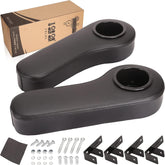
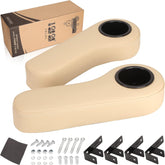
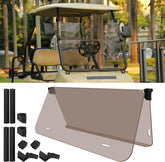
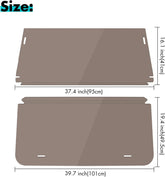

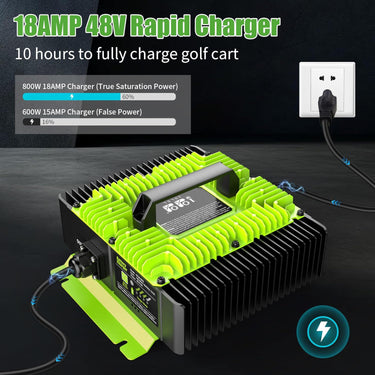
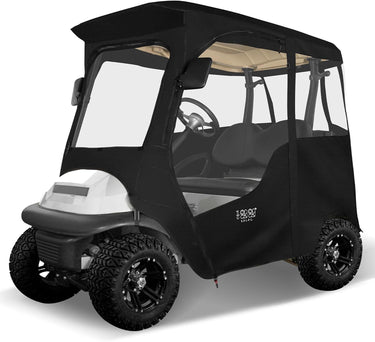
Leave a comment
Please note, comments need to be approved before they are published.